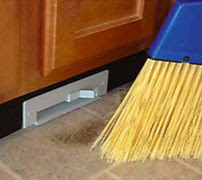More Upcycling - iPod packaging becomes speaker...
 One of the most popular posts on this blog has been on "upcycling" - designs which reuse components in more valuable and sophisticated ways, rather than "downcycling" into progressively lower-quality uses on the way to the landfill. Well, here's another one! Through Gizmodo, this nifty little kit transforms the packaging for an iPod Nano into a teensy speaker set for the iPod. The idea is neat; the reality is a little more sobering. Who will actually use speakers of this quality (tiny speakers can't reach any bass) and low power (they're unpowered, so it'll be a whisper at best), other than to show off how eco-savvy they are? Ironically, once the novelty is over, the packaging and the speakers will end up in the landfill - a greater hit to ol' Mother Earth than if the packaging had been tossed in the first place. Just because an idea is buzzworthy and inspiring doesn't mean it's ready to follow through on its promise!
One of the most popular posts on this blog has been on "upcycling" - designs which reuse components in more valuable and sophisticated ways, rather than "downcycling" into progressively lower-quality uses on the way to the landfill. Well, here's another one! Through Gizmodo, this nifty little kit transforms the packaging for an iPod Nano into a teensy speaker set for the iPod. The idea is neat; the reality is a little more sobering. Who will actually use speakers of this quality (tiny speakers can't reach any bass) and low power (they're unpowered, so it'll be a whisper at best), other than to show off how eco-savvy they are? Ironically, once the novelty is over, the packaging and the speakers will end up in the landfill - a greater hit to ol' Mother Earth than if the packaging had been tossed in the first place. Just because an idea is buzzworthy and inspiring doesn't mean it's ready to follow through on its promise!




















